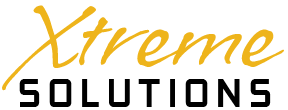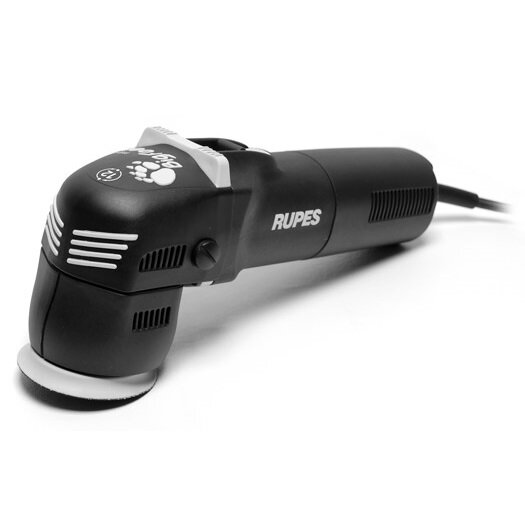1 / 2
 Image 1 of 2
Image 1 of 2

 Image 2 of 2
Image 2 of 2

PURE ACRYLIC POLISHING PAD
$12.49
Xtreme Solutions 8"*Pure Acrylic Polishing Pad / Light Compounding Pad has light cutting acrylic threads , designed as an intermediate polishing level for removing fine sanding scratches and for use with many suface cleaning products. The 8" Pure Acrylic Polishing Pad / Light Compounding Pad has a light cutting power that is ideal for applying pre-wax cleaners as well as many finishing polishes. This pad is designed to generate less heat for the application of waxes, micro-fine polishes and sealants. These 8"* Acrylic Polishing Pads contain a hook and loop attachment and have curved reinforced plastic backing.
Xtreme Solutions Pure Acrylic Polishing Pad / Light Compounding Pad allows for maximum effectiveness when used with Xtreme Solutions compounds and polishes.
*Pad fits 7" backing plate
Cleaning your pads:
Wool/Acrylic/50-50 Pads:
When cleaning a wool pad on the fly during a rotary buffing process, a pad spur is the tool of choice. Start by bracing the tool against your lower leg, or by bracing the handle (if you use one) against your leg. With the tool on a moderate speed setting, bring the spur in contact with the pad on the area spinning away from you. With the tool switched on at a moderate speed the spur is moved across the face of the pad but only on the side that is spinning away from you. Should you lose control of the spur at this point it will merely be flung to the floor: doing so on the other side of the pad could throw the spur into the air and directly into your face. When finished spurring the fibers of the pad are no longer matted, and spent product/paint has been expelled. You can now continue buffing efficiently and effectively. Compressed air can also be used to clean excess, dried product from a wool pad, as can a pad washer. The pad washer is an excellent way to finish the day when using wool pads. Any slight amount of product left behind can then be cleared out with a spur (as above) or with compressed air before beginning a new project later on.
Foam Pads:
The same excess product and spent paint can collect on foam pads, quickly building up and drying on the face of the pad. A pad conditioning brush is best for cleaning foam pads on the fly, and the basic process is essentially the same as with the wool pads described above. With the tool braced against your leg, switch the tool on at moderate speed and move the brush across the face only on the side spinning away from you. Excess product/paint is removed but the pad remains essentially "primed" and you can continue buffing. Another option for the above is to use a terry cloth towel wrapped around the index finger of one hand while holding the tool with the other. Use exactly as described above so that the tool spins the pad away from your finger rather than towards it.
Quantity:
Add To Cart
Xtreme Solutions 8"*Pure Acrylic Polishing Pad / Light Compounding Pad has light cutting acrylic threads , designed as an intermediate polishing level for removing fine sanding scratches and for use with many suface cleaning products. The 8" Pure Acrylic Polishing Pad / Light Compounding Pad has a light cutting power that is ideal for applying pre-wax cleaners as well as many finishing polishes. This pad is designed to generate less heat for the application of waxes, micro-fine polishes and sealants. These 8"* Acrylic Polishing Pads contain a hook and loop attachment and have curved reinforced plastic backing.
Xtreme Solutions Pure Acrylic Polishing Pad / Light Compounding Pad allows for maximum effectiveness when used with Xtreme Solutions compounds and polishes.
*Pad fits 7" backing plate
Cleaning your pads:
Wool/Acrylic/50-50 Pads:
When cleaning a wool pad on the fly during a rotary buffing process, a pad spur is the tool of choice. Start by bracing the tool against your lower leg, or by bracing the handle (if you use one) against your leg. With the tool on a moderate speed setting, bring the spur in contact with the pad on the area spinning away from you. With the tool switched on at a moderate speed the spur is moved across the face of the pad but only on the side that is spinning away from you. Should you lose control of the spur at this point it will merely be flung to the floor: doing so on the other side of the pad could throw the spur into the air and directly into your face. When finished spurring the fibers of the pad are no longer matted, and spent product/paint has been expelled. You can now continue buffing efficiently and effectively. Compressed air can also be used to clean excess, dried product from a wool pad, as can a pad washer. The pad washer is an excellent way to finish the day when using wool pads. Any slight amount of product left behind can then be cleared out with a spur (as above) or with compressed air before beginning a new project later on.
Foam Pads:
The same excess product and spent paint can collect on foam pads, quickly building up and drying on the face of the pad. A pad conditioning brush is best for cleaning foam pads on the fly, and the basic process is essentially the same as with the wool pads described above. With the tool braced against your leg, switch the tool on at moderate speed and move the brush across the face only on the side spinning away from you. Excess product/paint is removed but the pad remains essentially "primed" and you can continue buffing. Another option for the above is to use a terry cloth towel wrapped around the index finger of one hand while holding the tool with the other. Use exactly as described above so that the tool spins the pad away from your finger rather than towards it.
Xtreme Solutions 8"*Pure Acrylic Polishing Pad / Light Compounding Pad has light cutting acrylic threads , designed as an intermediate polishing level for removing fine sanding scratches and for use with many suface cleaning products. The 8" Pure Acrylic Polishing Pad / Light Compounding Pad has a light cutting power that is ideal for applying pre-wax cleaners as well as many finishing polishes. This pad is designed to generate less heat for the application of waxes, micro-fine polishes and sealants. These 8"* Acrylic Polishing Pads contain a hook and loop attachment and have curved reinforced plastic backing.
Xtreme Solutions Pure Acrylic Polishing Pad / Light Compounding Pad allows for maximum effectiveness when used with Xtreme Solutions compounds and polishes.
*Pad fits 7" backing plate
Cleaning your pads:
Wool/Acrylic/50-50 Pads:
When cleaning a wool pad on the fly during a rotary buffing process, a pad spur is the tool of choice. Start by bracing the tool against your lower leg, or by bracing the handle (if you use one) against your leg. With the tool on a moderate speed setting, bring the spur in contact with the pad on the area spinning away from you. With the tool switched on at a moderate speed the spur is moved across the face of the pad but only on the side that is spinning away from you. Should you lose control of the spur at this point it will merely be flung to the floor: doing so on the other side of the pad could throw the spur into the air and directly into your face. When finished spurring the fibers of the pad are no longer matted, and spent product/paint has been expelled. You can now continue buffing efficiently and effectively. Compressed air can also be used to clean excess, dried product from a wool pad, as can a pad washer. The pad washer is an excellent way to finish the day when using wool pads. Any slight amount of product left behind can then be cleared out with a spur (as above) or with compressed air before beginning a new project later on.
Foam Pads:
The same excess product and spent paint can collect on foam pads, quickly building up and drying on the face of the pad. A pad conditioning brush is best for cleaning foam pads on the fly, and the basic process is essentially the same as with the wool pads described above. With the tool braced against your leg, switch the tool on at moderate speed and move the brush across the face only on the side spinning away from you. Excess product/paint is removed but the pad remains essentially "primed" and you can continue buffing. Another option for the above is to use a terry cloth towel wrapped around the index finger of one hand while holding the tool with the other. Use exactly as described above so that the tool spins the pad away from your finger rather than towards it.





